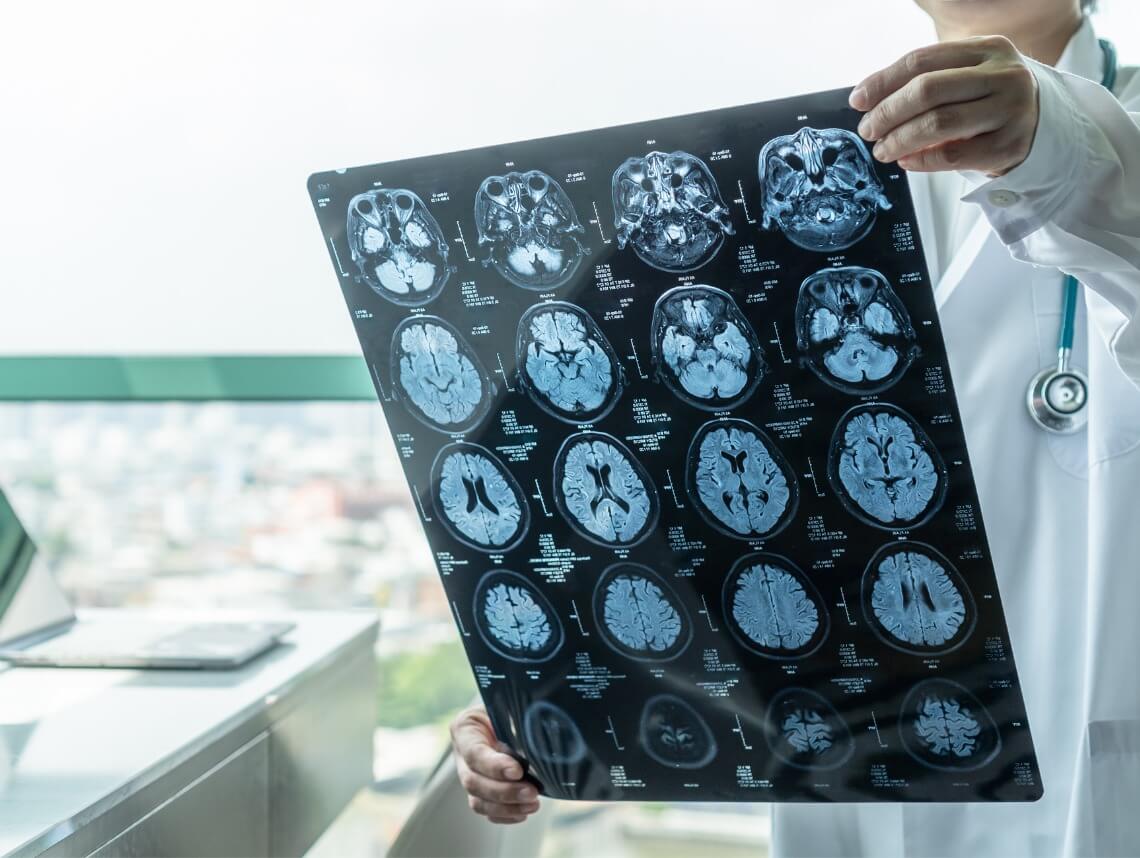Having a child experience any type of brain injury is terrifying for a parent. It can come with life-altering challenges and questions, even after the acute phase of treatment. While traumatic brain injuries (TBI) are the most commonly known and experienced brain injuries, there are many other types, including anoxic brain injuries. If your child has experienced a pediatric anoxic brain injury, you understand the unique treatment and care needs this type of injury requires.
The following guide is intended to give you clear information about pediatric anoxic brain injuries, including the causes, treatment options, and how to meet the long-term care needs of your child. By educating yourself as a caregiver and parent, you can take an active role in the care journey to achieve the best outcome for your child and your family.
What is anoxic brain injury?
In contrast to a TBI, which is typically caused by direct physical force to the head, anoxic brain injuries are related to a lack of oxygen supply to the brain. To function, our brains need a steady supply of oxygen that is carried through the bloodstream. If this supply is cut off for even a short period of time, it can result in the death of brain cells and long-term brain damage.
Anoxic brain injuries are caused by a complete lack of oxygen to the brain, which can begin to cause permanent damage after four minutes of deprivation. A similar type of brain injury is known as hypoxic brain injury, which is caused by ongoing restriction and a limited supply of oxygen to the brain. The severity of symptoms and complications can depend on the specific underlying cause, as well as the length of time the anoxic brain injury occurs.
Pediatric Anoxic Brain Injury Causes
A pediatric anoxic brain injury can be caused by a wide range of contributing factors. In older adults, the most common cause is a stroke, while pediatric cases are often caused by the following issues:
- Infections, including meningitis or sepsis
- Drowning
- Exposure to toxic substances, such as carbon monoxide
- Severe blood loss
- Respiratory arrest or blockage
- Heart arrhythmia or related heart disease
Pediatric Anoxic Brain Injury Risk Factors
Anoxic brain injury can also occur in conjunction with TBI, where a very severe head trauma or skull fracture also completely deprives the head of oxygen and/or blood supply. In addition to accidents and exposure to chemicals, risk factors for anoxic brain injury can include the presence of a congenital heart or respiratory defect, as well as diagnosis with certain brain conditions.
Pediatric Anoxic Brain Injury Symptoms
Symptoms of anoxic brain injury can develop suddenly or gradually after the event. The symptoms will generally depend on the severity of the cause and the length of time the brain loses oxygen supply. Common signs and symptoms of anoxic brain injury in children can include:
- Emotional problems
- Communication and language issues, including developmental delays
- Poor decision making and impulse control
- Short-term memory dysfunction
- Motor skill dysfunction and balance problems
- Muscle weakness
- Visual and hearing problems
Pediatric Anoxic Brain Injury Complications
Pediatric anoxic brain injury can lead to lifelong complications, including developmental delays, mental health problems, reduced academic performance, and problems completing everyday tasks. It is important to see a doctor to receive a diagnosis and create a treatment plan if there are any signs of a pediatric anoxic brain injury.
Diagnosing Anoxic Brain Injury
Doctors, including pediatric brain injury specialists, can take several steps to identify the severity and extent of a pediatric anoxic brain injury in the aftermath of a causal event. This includes:
- Questions about the accident or event
- Discussion of symptoms and complications
- Review of medical history
- Full physical examination
- Diagnostic testing, including functional magnetic resonance imagery (MRI)
Anoxic Brain Injury Treatment
It is important to begin treatment as soon as possible after an anoxic brain injury and be as proactive about care as possible. The most common treatment steps for this type of brain injury include:
- Brain surgery, in some cases
- Extensive physical and occupational rehabilitation
- Speech therapy
- Behavioral care interventions
- Assistive equipment, such as a walker, braces, or wheelchair
- Medications to manage mental health, neurological issues, and other symptoms
Caring for a Child With Anoxic Brain Injury
Children with pediatric anoxic brain injuries very often have extensive care needs and can benefit from pediatric home health services. From minor to severe cases, a qualified home health care professional can assist with basic respite care, assistance with medication, help with feeding, or accompanying your child to appointments. For families of all sizes and backgrounds, pediatric home health is a critical part of the care picture for children living with a brain injury.
Contact Care Options for Kids for Home Health Care
It can be hard to balance your time between work, home, and caring for a child. That’s why our team of skilled professionals at Care Options for Kids is here to help. We have been enforcing precautionary measures and following the Centers For Disease Control (CDC) guidelines for COVID-19 to ensure the safety and health of our clients and employees.
Our home health care services offer support in the comfort of your home. We refer loving and competent nurses to provide customized care for families — from a few hours a day to around-the-clock supervision. Contact us directly to speak with a home health care professional or request a free in-home assessment. Together we can determine the best plan of action to keep your loved ones happy and healthy.
If you or a loved one are considering Pediatric Home Health Care Services, contact the caring staff at Care Options for Kids. Call today at (888) 592-5855.






